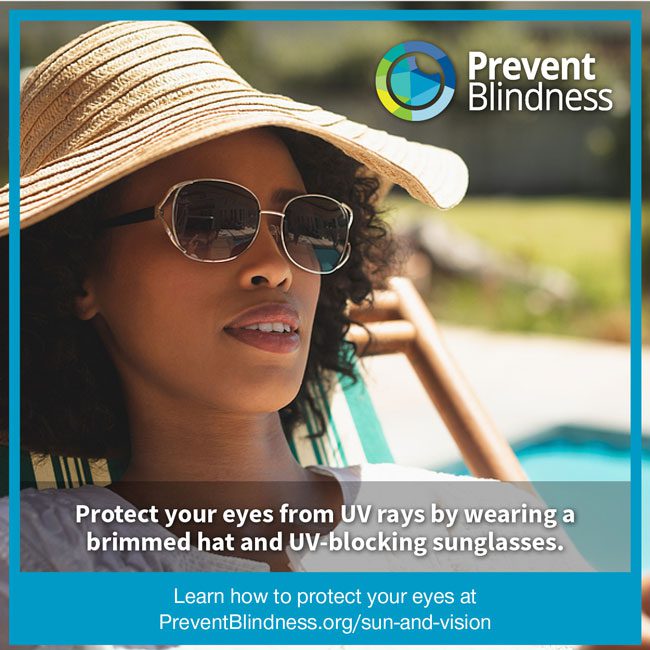Prevent Blindness provides free, dedicated resources to encourage proper eye protection from UV damage to eyes and vision
As the warmer weather begins to encourage more outdoor activities, Prevent Blindness has declared May as Ultraviolet (UV) Awareness Month. The nonprofit group is seeking to educate the public on the negative effects of UV exposure to the eyes and vision, offering a dedicated webpage, PreventBlindness.org/sun-and-vision, downloadable fact sheets and shareable social media infographics.
There are two types of UV rays: UV-A and UV-B. Over time, the effects of UV rays may help cause a number of eye problems. UV-A rays may affect central vision. They can damage the macula, a part of the retina at the back of the eye. The front part of the eye (the cornea and the lens) absorbs most UV-B rays, but these rays may cause even more damage to the eyes than UV-A rays.
According to the Wilmer Eye Institute and Johns Hopkins Medicine, corneal damage, cataracts and macular degeneration are all possible chronic effects from UV exposure and can ultimately lead to decreased vision. Additionally, UV light is associated with skin cancers including squamous cell carcinomas, basal cell carcinomas, and cutaneous melanoma. Squamous cell carcinoma can occur not just on the skin, but on the conjunctiva and invade the cornea and inside of the eye, in some cases necessitating removal of the entire eye.
The Hidden Dangers of UV: Keeping Your Eyes Safe report from The Vision Council lists factors that put people’s eyes at greater risk of damage from UV exposure, including:
- Geography– In the United States, southern communities tend to receive more intense solar rays than northern ones. Elevation can also be a factor, since the thinner atmosphere at higher altitudes cannot absorb as much radiation. At the beach, sand or water can reflect up to 25% of UV; on a snow-covered surface, as much as 80% of UV may be reflected – adding to the initial exposure.
- Age– Children receive three times the annual sun exposure of adults, and research has shown that their young eyes are especially susceptible to UV-related harm. Unlike the mature lens of an adult eye, a child’s lens cannot filter out UV rays and so more radiation reaches the retina. At the same time, decades of sun exposure make older people’s eyes much more prone to visual problems and disease.
- Eye color– The color of the eye appears to play a role, with some studies suggesting that blue eyes are at more risk for UV damage than brown eyes. The protective pigment melanin may be the key detail – blue irises have less of it – and a higher incidence of age-related macular degeneration may be one consequence.
Prevent Blindness strongly recommends wearing UV-blocking sunglasses as well as a brimmed hat to provide the best protection against UV rays. Sunglasses should:
- reduce glare
- filter out 99-100% of UV rays
- be comfortable to wear
- not distort colors
“Spending time outdoors offers many health benefits. We encourage adults and children to wear the proper UV protection for their eyes to keep them safe and healthy today, and in the years to come,” said Jeff Todd, president and CEO of Prevent Blindness.
For more information on UV eye protection, please visit the Prevent Blindness dedicated webpage at PreventBlindness.org/sun-and-vision, or call (800) 331-2020.

